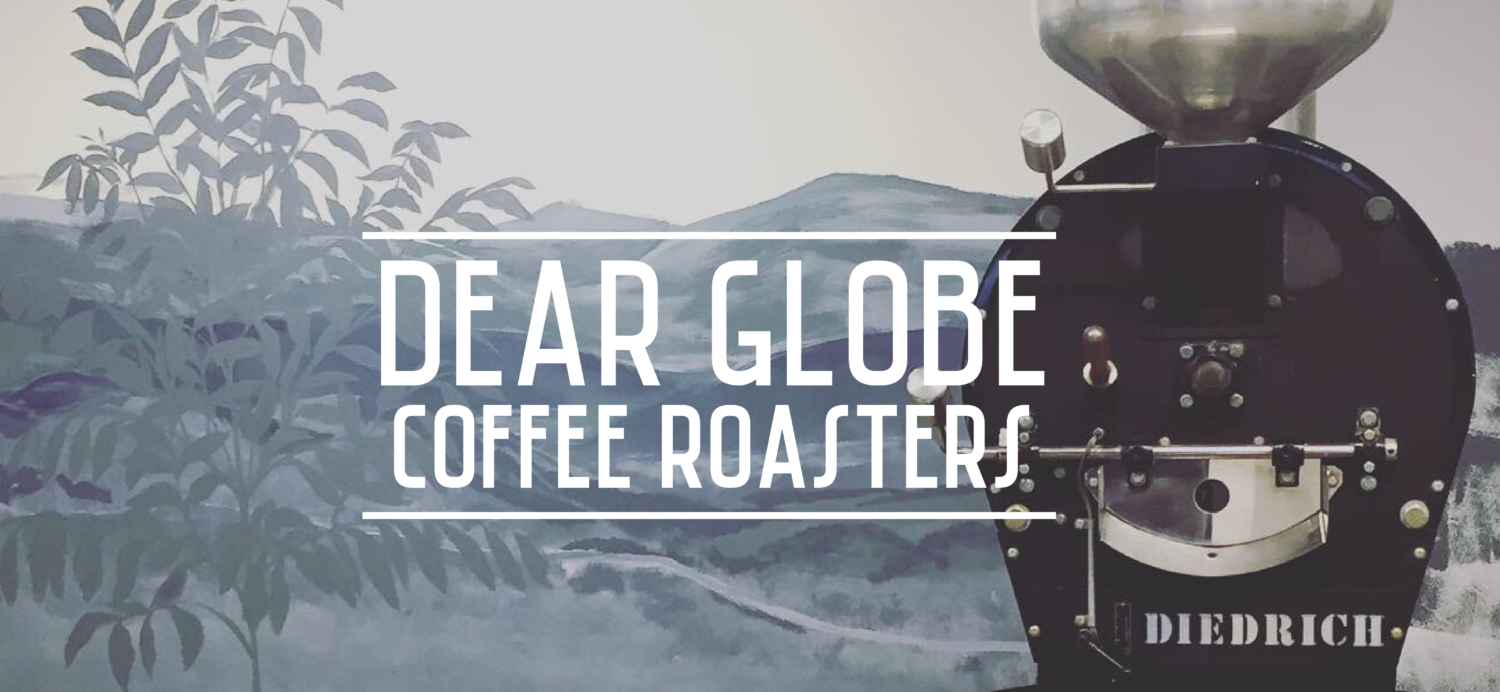A good cup of coffee is a little work of art. Like dance or theater, coffee is the ephemeral product of skillful collaboration. If you’re making coffee at home, you are one of these collaborators, and yours is a pivotal role. We think that role should be as easy or as hard as you want it to be.
If you brew Dear Globe Coffee the way you would brew any other coffee, it will probably turn out… pretty great, honestly. But if you want each coffee to really shine through in the full spectrum of its distinctive flavors, these simple recipes might get you there, and they’re sure to get you close. If you want to go deeper, read on through the Steps and Descriptions. If want to lose yourself in coffee, see Extracting Like a Pro*
Pour-over and Auto-drip
(coffee:water = 1:16)
Recipe
Coffee: 21.9 g
Or: 4 tbs, level
Water: 350g (/ml. 1g water = 1ml)
Or: 12 fl oz
Grind: medium fine, like ordinary table salt
Time: 3min 30sec
Ready to brew? Go ahead!
Want to know more? See Steps and Description below.
Steps
- Measure water and put it on to boil in a kettle
- (for a nicer and more accurate pour, you can use a “gooseneck” kettle, like a Bonavita or a Hario Buono)
- Fold filter along crease, place in filter holder, rinse
- (Hario V-60, Chemex, Kalita Wave, Melitta Coffee Brewer, etc)
- Measure out coffee using a tablespoon or gram scale, grind, pour into filter
- (you want the bed of coffee to be level, so you might need to give it a shake)
- Once water reaches a boil, remove from heat and let settle
- (ideal temp is just under boiling, around 201-205 degrees f)
- Place filter holder onto cup or carafe and gently pour in just enough water to saturate the grounds.
- (This is the “bloom,” where gasses are allowed to escape before being submerged in water)
- After about 30 seconds, gradually pour into the center of the coffee bed in a tight circular motion until the dripper is ⅓ to ⅔ full
- Maintain water surface at desired level with slow, circular pours. Time it out so that all the water is done dripping into the cup after about three and a half minutes.
- (to speed up the brew, fill higher; to slow it down, let water level fall and keep it lower)
- Your coffee is ready to sip!
Description
Pour-over with a paper filter is known to yield a clean, complex, balanced cup of coffee. The filter blocks some of the oil and almost all solid matter, but allows all the flavor compounds to pass through. In principle it’s the same as auto-drip, but it gives you more control, and is a nice, meditative activity in its own right. The above recipe is for 12 oz. To brew a different amount, simply adjust the amount of coffee you use to the amount of water, keeping the ratio at or near 1:16.
NOTE: more important than the specific brewer you use is the grinder. If you invest in only one piece of gear, make it a burr grinder, which is the only way to achieve the evenness and precise control of granule size you need to bring out the best in your beans. Ideal grind size may vary slightly by brewer, and there are no fixed standards for grinder settings. Assuming you follow a reliable recipe like the one above, if the coffee is bitter, go a little courser. If it’s sour and lackluster, go fine. To learn more about the effect of brew parameters on flavor and mouthfeel, see Extracting Like a Pro*
*Extracting like a pro:
To really dial in the flavors you want, it can help to know the basics of “extraction.” In the world of coffee, “extract” is just a more technical and descriptive word for “brew.” When we brew coffee, we are essentially using water to extract flavor compounds from the grounds and put them in the cup. We extract more flavors
- the finer we grind the coffee,
- the more water we use,
- the higher its temperature, and
- the more time it’s in contact with the grounds.
Generally speaking, the first flavors to be extracted are mostly light and bright. Then come rich and sweet, followed by bitter and heavy. This actually corresponds to the physical mass of the molecules, which determines how easily the water can pick them up and carry them away.
If not enough compounds are extracted, the flavors will be sour and lackluster and the body will be light. We call this “under-extracted.” If too much is extracted, the flavor will be bitter, and the heavy compounds will weigh on the tongue, giving it a subtle but distinctly unpleasant drying or ashy sensation. We call this “over-extracted.” If the flavor and mouthfeel of the coffee are just right, you’ve extracted just the right amount! We call this “really good.” 🙂
As outlined above, the variables of grind size, coffee:water ratio, temperature, and brew time are your brewing parameters. These parameters affect each other in various ways that become obvious with practice, so once you’ve got them down there’s no limit to what a little patience, persistence and creativity can yield!
